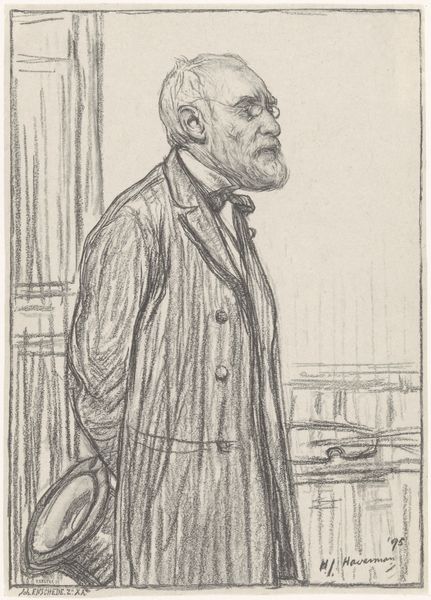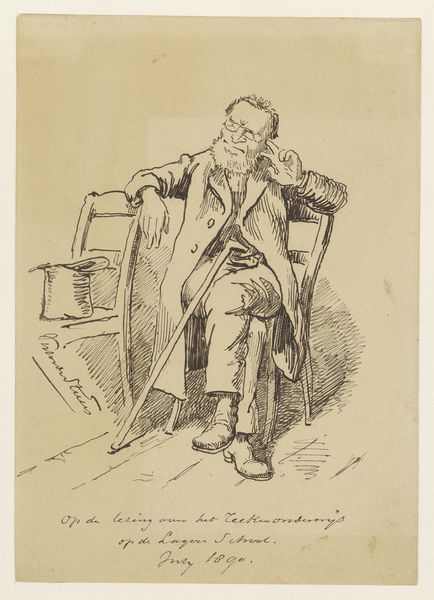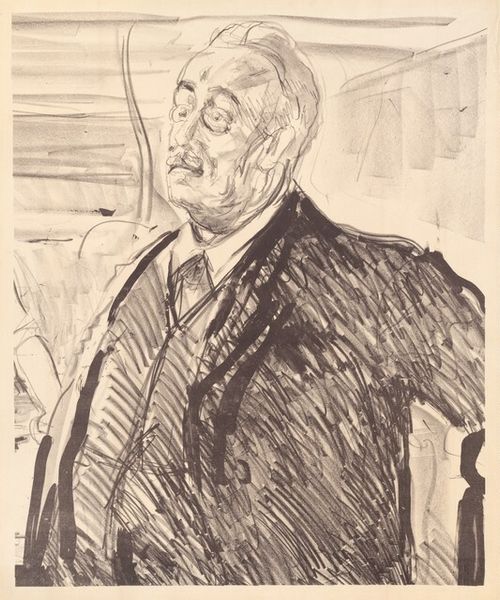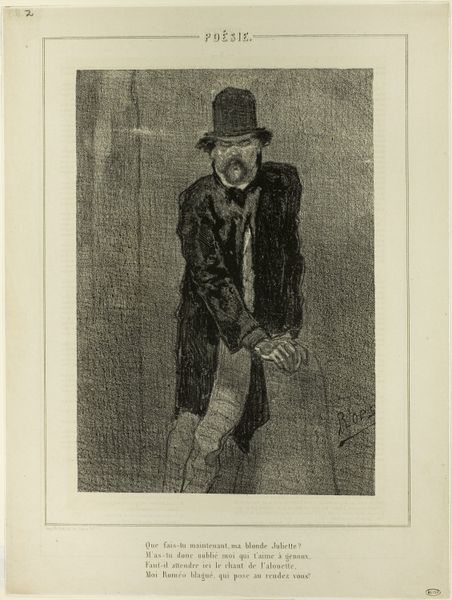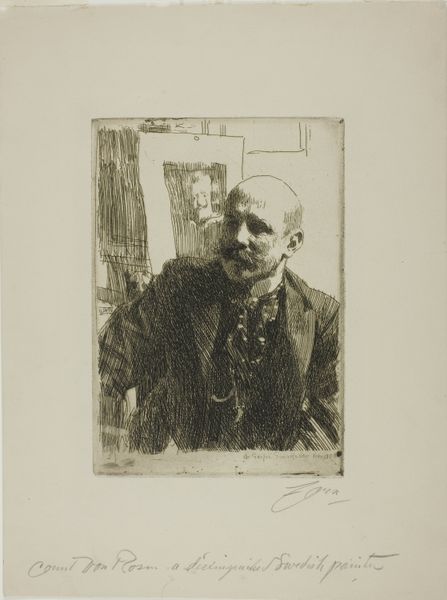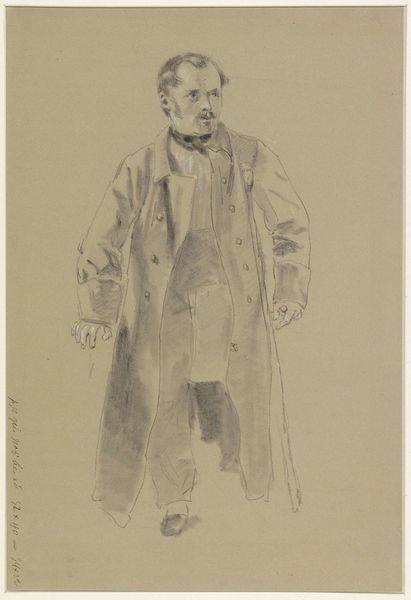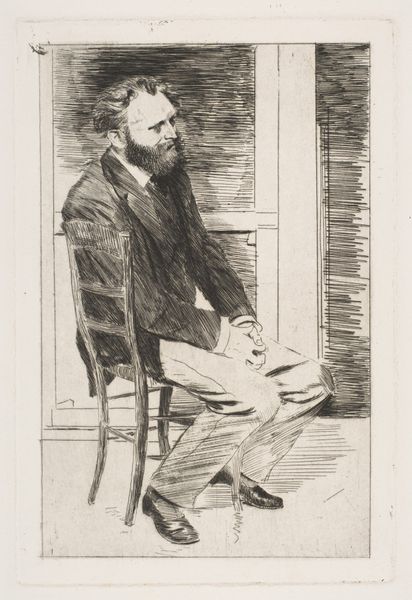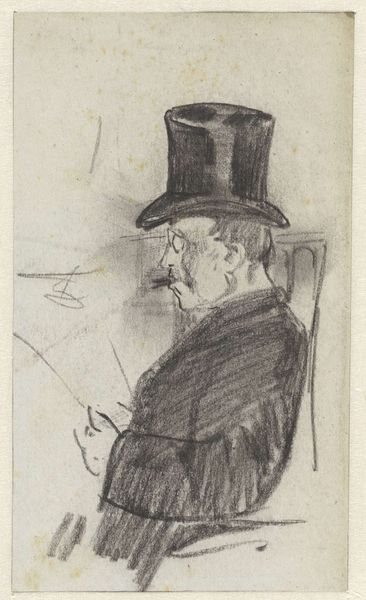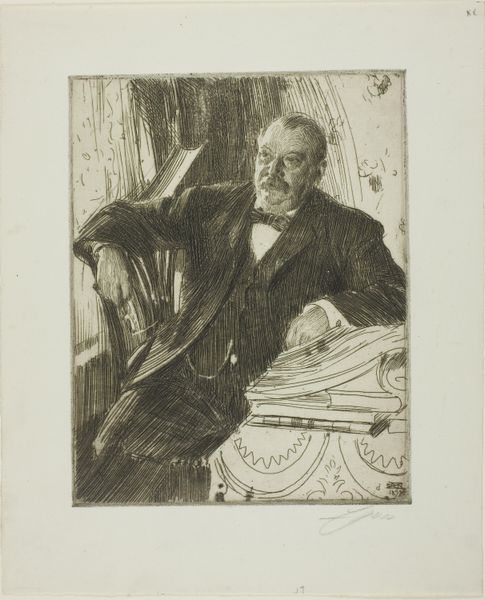
drawing, print, etching, paper
#
portrait
#
drawing
# print
#
etching
#
paper
#
modernism
#
realism
Dimensions: 226 × 150 mm (image/plate); 319 × 200 mm (sheet)
Copyright: Public Domain
Editor: So, this is Anders Zorn’s "Colonel Lamont I (Whole length)", made in 1900. It's an etching on paper. It’s giving me a real sense of Edwardian-era power, the colonel's got this really confident stance. What do you see in this piece? Curator: This etching allows us to explore the construction of masculinity and power at the turn of the century, wouldn’t you agree? Consider the historical context. What societal roles and expectations are being reinforced here, and for whom? Zorn captures more than just a likeness; he freezes a moment in time that represents prevailing ideologies. Editor: So it’s less about the individual colonel, and more about what he *represents*? I see what you mean about the ideologies… it feels like a display. The tailored suit, the pose… almost like he’s on a stage. Curator: Precisely. Think about the imperial project happening globally at this time. Men like Colonel Lamont were often positioned as symbols of authority and control. Does Zorn's choice of medium – etching – play a role in how that message is conveyed? It is more accessible to the public than painting, for instance. How does that influence our reading? Editor: That's a good point, it feels like a mass produced image almost, but the handmade etching technique feels very intimate. It’s interesting that a potentially widely disseminated image would be made by such a hands-on process. Curator: The interplay between technique and subject is crucial. Even today, understanding this relationship helps us analyze power dynamics and challenge historical narratives. Editor: I'm walking away from this conversation seeing that Zorn’s etching doesn't just show us a colonel; it makes us question the power structures of an era. Curator: Indeed, the role of art isn't just to reflect, but to invite critical engagement with history, identity, and the ongoing negotiations of power.
Comments
No comments
Be the first to comment and join the conversation on the ultimate creative platform.
